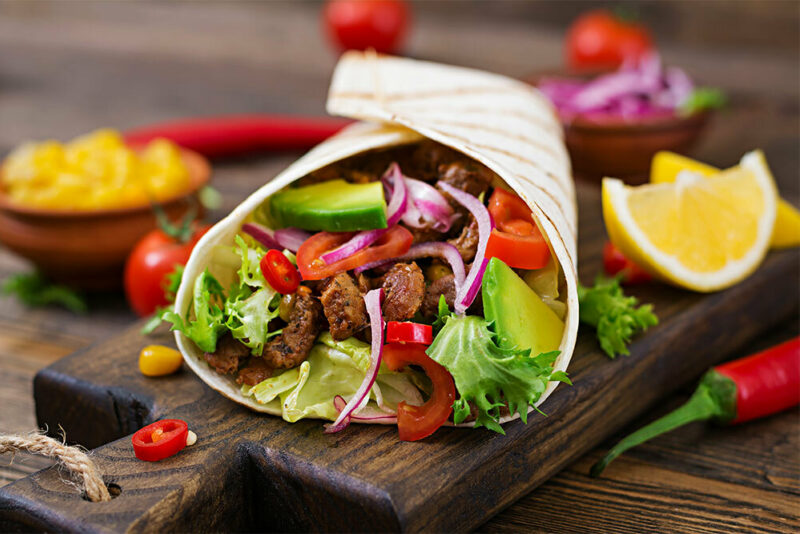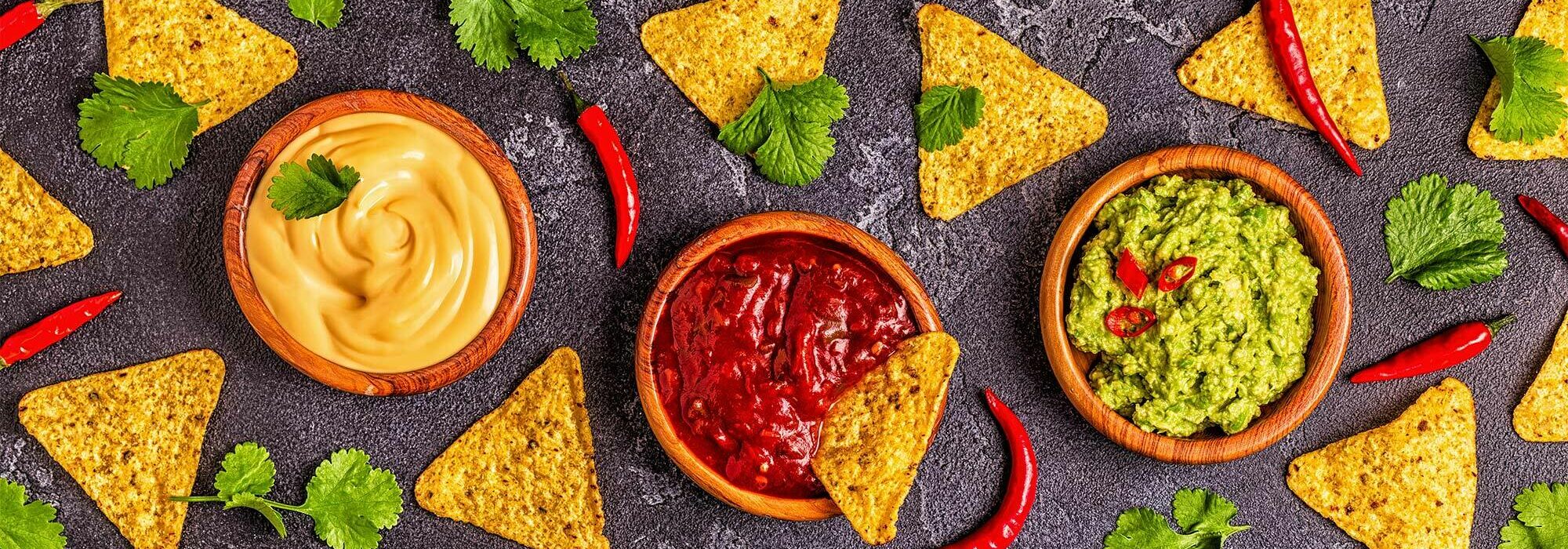Article Excerpt
Tex-Mex food is one of Texas’ greatest sources of pride, and deservedly so. Learn more about where Tex-Mex comes from and how it became distinctly Texan.
Texas is a great place to live (and to buy a house in)! One reason for this, which cannot be overlooked, is our Tex-Mex cuisine. It’s a source of pride for Texans, and a source of disagreement for some, too. Ask multiple Texans where to find the best Tex-Mex food, and you’re bound to get multiple answers.
Join us for a brief history of where Tex-Mex came from, and how it became a distinctly Texas style of food.
Defining Tex-Mex
Defining Tex-Mex cuisine isn't easy. It might be easiest to say that it’s “Mexican food” that you probably won’t find in most parts of Mexico. Think tacos, enchiladas, fajitas, chalupas, flautas, burritos, nachos, and so on.
There’s really no such thing as “Mexican food,” anyway. Mexico is a large, diverse country that’s home to many distinct culinary traditions from places like Oaxaca, the Yucatan Peninsula, and Jalisco. Different regions incorporate foods and cooking styles from the Aztecs and other Indian nations with those of the Spanish and their descendants.
![Photo by jeffreyw from Flickr [Creative Commons] Tex-Mex plate with tacos, chalupas, and beans](/images/articles/_generalPhotoStandard/tex-mex-plate.jpg)
Photo by jeffreyw from Flickr [Creative Commons]
Where did Tex-Mex food come from?
Tex-Mex began to take the shape we know today in San Antonio and the Rio Grande Valley in the 19th century. Norteño cooking traditions from Northern Mexico were combined with foods from Texan rancher culture. While some cultural features commonly associated with Tex-Mex, such as mariachis and tequila, come from Jalisco, the food itself has roots in both Mexico and Texas.

The common ingredients in Tex-Mex have origins that cross oceans and span continents, Many influences came together over the course of centuries:
Beans: Pinto beans and black beans are both common ingredients in Tex-Mex food. Both are native to the Americas and were staples in the diets of the Aztecs and other indigenous peoples of Mexico.
Rice: The Spanish brought this Tex-Mex staple with them when they conquered the Aztecs in the 16th century.
Cumin: This spice is native to an area between the Eastern Mediterranean and Central Asia. It made its way west to Morocco and the Canary Islands, and then found its way to Texas when large numbers of Canary Islanders settled in the San Antonio area in the 1700s.
Flour tortillas: Corn tortillas have been a common part of Norteño cuisine for centuries. Ranchers on the U.S. side of the border may have introduced wheat flour to the area in the 1800s, leading to the development of flour tortillas.
Beef: While beef is not a common ingredient in most parts of Mexico, it is a staple of Tex-Mex food. We can thank the cattle ranchers of Texas and Northern Mexico for that.
Cheese: Like beef, cheese is not as common in many types of Mexican cuisine. Americans brought cheddar and other kinds of cheese to Texas, and it became an inseparable part of Tex-Mex.
Guacamole: Long before the Spanish captured Tenochtitlán, the Aztec capital city, in 1521, people there were enjoying ahuaca-mulli.
![Photo by squidish from Flickr [Creative Commons] breakfast taco, guacamole, and various Tex-Mex spices](/images/articles/_generalPhotoStandard/breakfast-taco-spices.jpg)
Photo by squidish from Flickr [Creative Commons]
Some well-known dishes have their own distinct origin stories within the broader Tex-Mex tradition:
Chile con carne, a/k/a Chili: You won’t find this dish in Mexico. It was invented in the 19th century by women in San Antonio known as the Chili Queens. They gained fame nationwide for selling chili at food stands in plazas around town. During his time in Texas, the writer O. Henry memorialized them as “coquettish señoritas” in one of his short stories. Their chili even made an appearance at the 1893 World’s Fair in Chicago.
Nachos: These may have become a Tex-Mex standard thanks to a group of women from Eagle Pass who, during the 1940s, crossed the Rio Grande to make frequent visits to a cafe in Coahuila owned by Ignacio “Nacho” Anaya. According to the possibly-apocryphal tale, they became enormous fans of a dish he threw together that consisted of cheese and jalapeño slices over fried corn tortilla pieces. Nachos may have hit the Texas mainstream at the 1964 State Fair in Dallas.
Fajitas: Also known as tacos al carbon, fajitas may have originated in the Rio Grande Valley. They gained popularity during the 1970s at Ninfa’s, a legendary Houston restaurant.
Chile con queso, or simply “Queso”: This may have begun in San Antonio as far back as 1910. A Lubbock church reportedly published a queso recipe in 1939 that called for Velveeta.
Breakfast tacos: A relatively new arrival to the Tex-Mex scene, no one knows for sure who invented them or where they originated. No matter what anyone tries to tell you, though, they definitely were not invented in Austin.
Where did the term “Tex-Mex” come from?
The first use of the term “TexMex,” without the hyphen, referred to the Texas and Mexican Railroad, which received its charter in 1875. The railroad helped the development and spread of Tex-Mex food by making transportation easier.
For all of the work put in by countless abuelas, chili queens, and chefs on both sides of the border, it was an English cookbook author who finally gave Tex-Mex food its name. Diana Kennedy’s 1972 book The Cuisines of Mexico drew a clear distinction between Mexican and Tex-Mex food.
![Photo by Hungry Dudes from Flickr [Creative Commons] Chips and Queso - delicious!](/images/articles/_generalPhotoStandard/chips-queso.jpg)
Photo by Hungry Dudes from Flickr [Creative Commons]
All-you-can-eat Tex-Mex?
Many of our borrowers come from other states. We’d like to think that our Tex-Mex is one reason we’ve seen so much growth. We’d be happy to welcome you home here. You can have fajitas every night. Get started with our easy pre-qualification form to see what your best mortgage options are!



